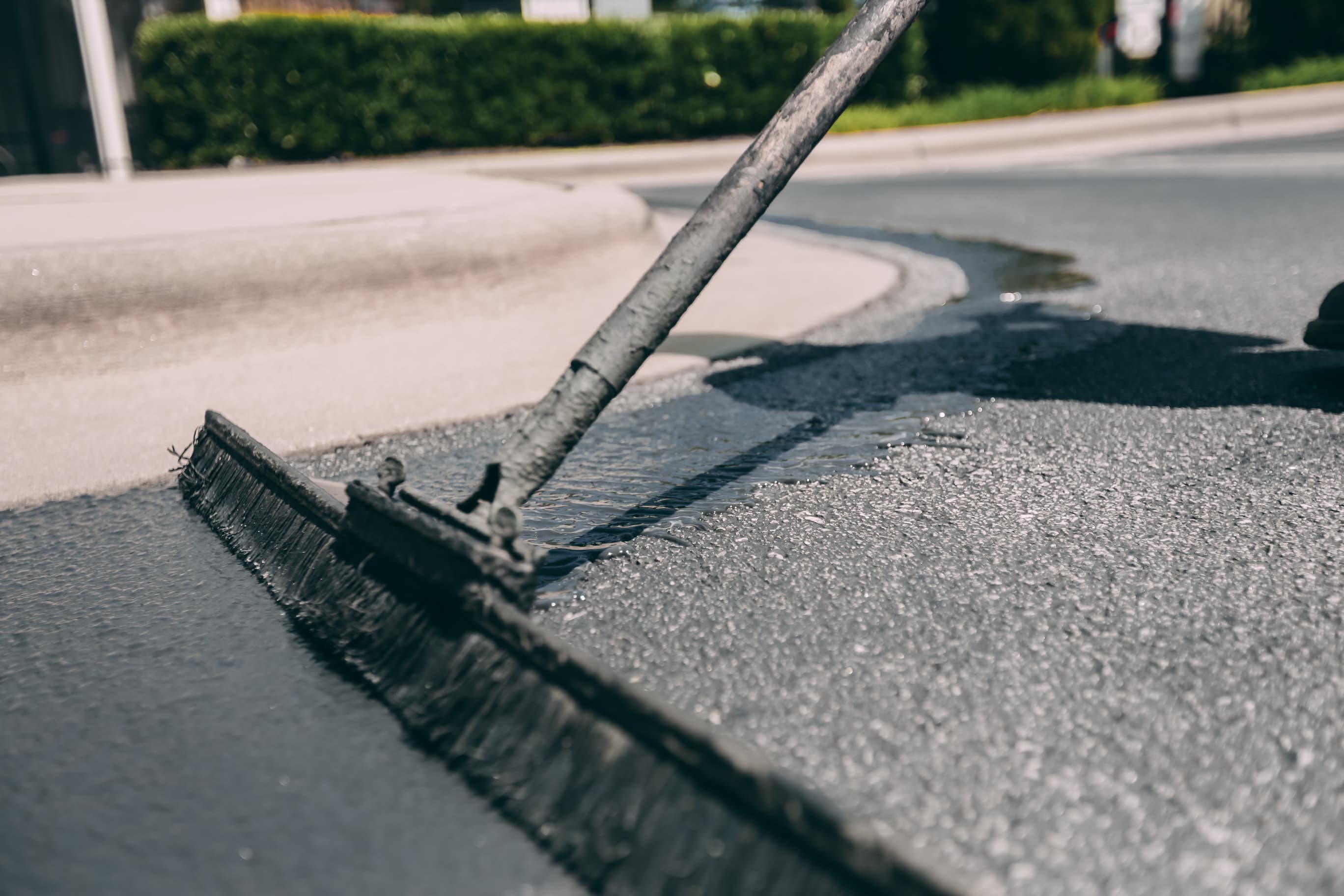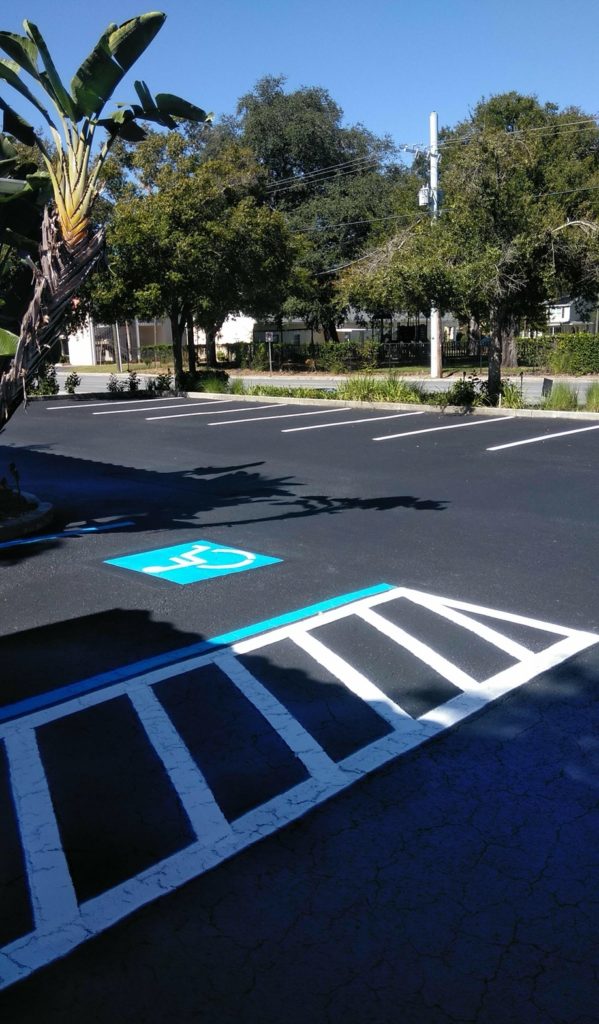Rejuvenate Your Building with Regrading and Asphalt Sealing Techniques
Rejuvenate Your Building with Regrading and Asphalt Sealing Techniques
Blog Article
Warm Mix Asphalt: A Sustainable Remedy for Sidewalk
Warm Mix Asphalt (HMA) has actually emerged as a leading sustainable choice for pavement services, providing a myriad of innovative technologies and environmental advantages. Its capacity to reduce and recycle products power usage provides a compelling instance for its fostering in roadway building projects. The long-lasting performance and durability of HMA make it a recommended alternative for facilities development. As the need for eco-friendly construction practices expands, checking out the nuances of HMA's sustainability can give useful insights right into the future of sidewalk solutions.
Ecological Benefits of Warm Mix Asphalt

In Addition, Warm Mix Asphalt aids to minimize city warm island results. Its dark color soaks up sunshine, lowering the amount of warmth mirrored back right into the atmosphere contrasted to lighter-colored sidewalks. This can reduce ambient temperature levels in city areas, lowering the demand for air conditioning and ultimately reducing power usage.
Additionally, Hot Mix Asphalt adds to boosted stormwater monitoring. Its porous nature allows water to infiltrate the sidewalk and recharge groundwater supplies, reducing overflow and the threat of flooding. These ecological benefits make Warm Mix Asphalt a lasting option for paving freeways and roadways.
Power Efficiency in HMA Manufacturing
Is energy effectiveness a critical element in the production of Warm Mix Asphalt (HMA)? Power plays a considerable duty in the production of HMA, influencing both expense and environmental sustainability. One key aspect of power effectiveness in HMA manufacturing is the usage of cozy mix asphalt (WMA) innovations.
Additionally, innovations in plant technologies have led to more energy-efficient HMA production procedures. By enhancing power use in HMA production, the sector can reduce its carbon footprint while maintaining high-quality sidewalk materials.
Recyclability of Hot Mix Asphalt
The recyclability of Warm Mix Asphalt (HMA) is a pivotal aspect of its sustainability and long-term environmental effect. HMA is just one of the most recycled products in the USA, with over 100 million lots of reclaimed asphalt sidewalk (RAP) being reused annually in new sidewalk building and construction. Reusing HMA offers a number of environmental benefits, such as lowering the requirement for virgin materials, lowering energy consumption during production, and lowering the quantity of waste sent to garbage dumps.
The procedure of recycling HMA includes milling the existing pavement, crushing it into smaller pieces, and mixing it with brand-new aggregate and asphalt binder to develop a recycled mix. This recycled mix can commonly execute along with and even better than conventional HMA, while requiring less basic materials and creating lower greenhouse gas emissions. By integrating RAP right into new sidewalk tasks, roadway agencies can conserve natural sources, reduce prices, and lessen the environmental footprint visit this site right here of road building and construction and upkeep tasks. Overall, the recyclability of HMA plays a significant role in promoting lasting techniques within the pavement sector.

Long-Term Efficiency of HMA
Asphalt sidewalks demonstrate longevity and durability over an extended period, reflecting the long-term efficiency of Hot Mix Asphalt (HMA) Additionally, developments in HMA technology, such as the use of polymer-modified binders and warm mix asphalt, have further boosted the sturdiness and durability of HMA pavements. By prioritizing top quality building and maintenance practices, HMA continues to verify itself like this as a sustainable and economical remedy for lasting sidewalk framework.

HMA: Resilience and Sustainability
Showing both toughness and sustainability, Hot Mix Asphalt (HMA) has come to be a keystone in the building of lasting pavement frameworks - angled parking. HMA's resilience stems from its ability to stand up to hefty loads, rough weather, and high website traffic quantities, making it a trusted option for roadways, freeways, and airport paths. The structure of HMA, which normally consists of aggregates, binder, and filler, plays a vital role in boosting its long life and resistance to wear and tear
Additionally, HMA's sustainability lies in its recyclability and energy-efficient manufacturing process. The capability to recycle reclaimed asphalt pavement (RAP) in new HMA mixes lowers the need for virgin materials and minimizes the environmental impact of pop over to this web-site sidewalk construction and upkeep. Furthermore, the power effectiveness of generating HMA hinges on its reduced mixing temperature levels contrasted to various other pavement products, leading to lowered energy intake and greenhouse gas exhausts.
Verdict
To conclude, warm mix asphalt (HMA) provides a lasting solution for pavement with its eco-friendly attributes. HMA's recyclability, power efficiency in manufacturing, and long-lasting toughness make it a green choice for roadway construction. By saving natural deposits, lowering waste, and reducing greenhouse gas exhausts, HMA plays an important duty in promoting sustainability in framework advancement. Its ability to alleviate city warmth island effects further emphasizes its significance in creating environmentally mindful and resilient pavement systems.
HMA is one of the most recycled products in the United States, with over 100 million loads of recovered asphalt pavement (RAP) being reused each year in new pavement construction.The procedure of reusing HMA involves grating the existing sidewalk, crushing it right into smaller sized items, and mixing it with new accumulation and asphalt binder to produce a recycled mix.Asphalt pavements demonstrate durability and strength over a prolonged duration, showing the lasting performance of Hot Mix Asphalt (HMA) Furthermore, innovations in HMA innovation, such as the usage of polymer-modified binders and cozy mix asphalt, have actually better improved the toughness and longevity of HMA pavements. The capacity to reuse redeemed asphalt sidewalk (RAP) in brand-new HMA combinations decreases the need for virgin materials and minimizes the environmental impact of pavement building and upkeep.
Report this page